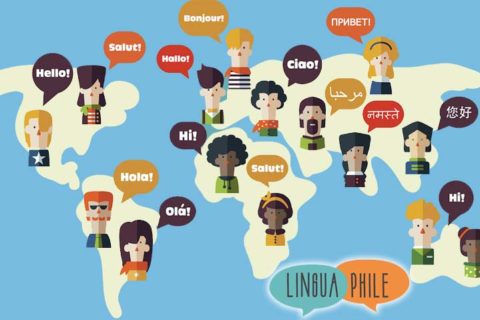Today, there are many accounts created that are used to hide the real identities of users, so with those accounts, they can freely do anything on their social media without other people knowing their real identity. Generally, they will use their second account to stalk people or even express anything outside of their real identity.
Due to the altered accounts, adolescents may do everything, both positive and negative things, freely since what they do will not be known by their friends or family. In psychology, adolescents who create alter accounts on social media have their own reasons why they do it.
To know more about what an alter account is, why adolescents create alter accounts and their reasons for creating alter accounts on social media, you can dive into our post below. Here you go!
What Is an Alter Account?
According to the findings in 2018 performed by HAI, around 46% of adolescents have more than one account used on one social media app. The accounts here are called alter accounts, where those who use two accounts for certain needs by hiding their real identity.
According to Piamonte, alter accounts on Twitter are a Twitter subculture in which users access the online platform using accounts that are different from their real accounts, known as aliases, by their friends, relatives, and colleagues.
Accounts involved in this community display an anonymous alternative Twitter user persona for everyone. Alter account users may exhibit behaviors and thoughts that those outside of the account consider to be deviant thoughts or behaviors.
Why Do Adolescents Create Their Own Alter Accounts on Social Media?
With today’s social media, it really gives people a space to easily communicate with people that they know and do not know through cyberspace. According to Turkle in Whitty & Young, cyberspace works as a virtual space on the internet, containing the tendency of individuals to play with their identities. Individuals can get to know themselves more deeply through cyberspace.
Of course, our dependence on the use of social media really needs to get great attention as a sensitive area for adolescents in forming self-concept. The best way to convey their self-concept is to create their identities in text, photos, or video narratives.
In this case, creating a virtual identity for adolescents is such an alternative to expressing themselves as they want. Thus, Vybiral revealed that the virtual world is an ideal place to test various aspects of identity.
A healthy real-life environment will form a good self-concept, as well as a healthy virtual environment will create a good self-concept in adolescents. Through this post, we try to examine a variety of reasons for adolescents to form virtual identities according to psychology.
Adolescents Create Alter Accounts on Social Media: 5 Reasons Why
In a research journal article performed by Vybíral and his team, there are a number of reasons why adolescents create altered accounts and change their identities on social media. Let’s see those reasons in the next section!
1) Fear of disclosure
Due to their fear of violating social and religious norms in society, adolescents create alter accounts on social media. They can really create a new alter account if they participate in groups that know them by certain nicknames (anonymous/pseudonymous) in cyberspace.
Essentially, adolescents want to do something that contradicts group values, norms, or rules, or even if they are ashamed of something. With the use of alter accounts, they can really use the internet to clear up their values and attitudes.
Finally, the groups of teenagers who follow their virtual group will also create an alter account by eliminating the religious and social norms of society. This behavior is a direct result of anonymous accounts.
In fact, in cyberspace, it is easier to express yourself to an unknown person without complying with the norms. Adolescents in society more often violate general “real life” norms and rules.
2) Emphasizing a characteristic
If adolescents want to identify themselves with direct feelings, they can change their accounts on social media to emphasize certain moods or certain characteristics of their personality. Furthermore, they will then change their account to highlight the characteristics of themselves by prioritizing certain characteristics.
Basically, this character is a small part of the real character of the adolescents and they made it as a virtual character. We take, for example, adolescents who like watching Japanese anime, so their virtual identities will be created by posting photos or videos of their favourite anime.
Reportedly, there are a lot of accounts created by social media users with the aim of expressing their negative or positive feelings. With the use of alter accounts, they can easily minimize the risk of feeling uncomfortable or reluctant to express their emotions.
Changing their real virtual identity is also used by teenagers to identify certain characters that are a small part of themselves, for example, in anonymous accounts that show a deviant sexual orientation. Of course, this phenomenon is not easy to accept in some countries, especially in those that do not legalize such deviant behavior.
3) Experimentation with sexual identity
In the case of teenagers whose sexual orientation has not been fully formed, they can experiment through virtual identities. The goal is to shape their desired sexual orientation. These experiments can have a significant influence on the formation of actual sexual identity, and may even accelerate that formation.
4) Play
One of the main reasons why adolescents create alter accounts is to have fun or, in some cases, to make fun of other people. Someone actually changed their virtual identity without any detailed explanation of their reasons. Well, it is likely that the motivation for this change is often implied, both consciously and unconsciously.
Cover, R. in his book entitled Digital Identities: Creating and Communicating The Online Self describes how changing and experimenting with identities is safe in the virtual world, although in reality this is difficult to do. As the dominant form of communication today, the internet enters the background of everyday spaces and has substantial implications for the way we create, perform, articulate, and perform our identities in our everyday lives.
5) To achieve perfection
Adolescence is a period of people who are looking for their ideal identity. Generally, adolescents expect their virtual identities to reflect themselves in real life. But in reality, they often want what they do in the real world to be like what they do on social media/cyberspace, though it is not the same and opposite in reality.
At this phase, adolescents may assume that virtual identity is an ideal place for self-improvement, which will be reflected in the behavior of teenagers in cyberspace. We take the example of adolescents who are smart, clever, and communicative. Cyberspace leads them to become good communicators.
Conclusion
So far, the alter account has become an identity game conducted by adolescents as an experience of interpersonal activity. The tendency to change their virtual identities occurs since they want to be the identity they expect and show direct feelings without involving the norms that exist in real life. Of course, the experts in psychology found findings to emphasize that there are negative aspects of self that teenagers want to express.

A bookworm and researcher especially related to law and citizenship education. I spend time every day in front of the internet and the campus library.





